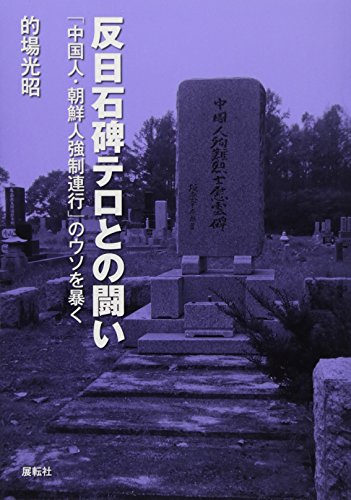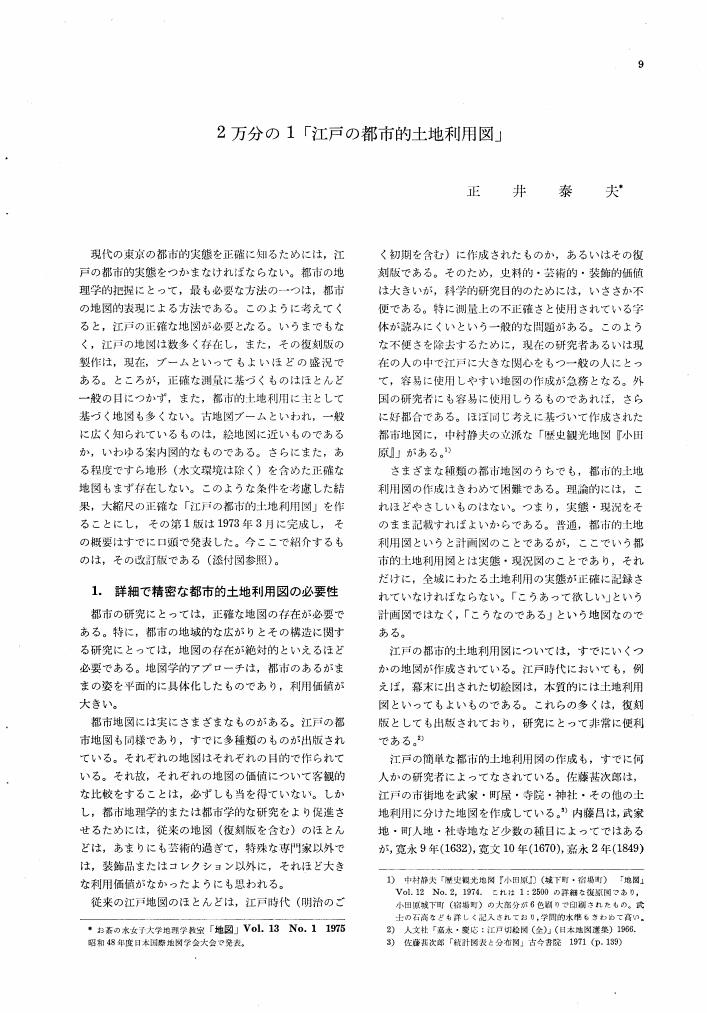1 0 0 0 OA アドラー心理学と学校教育
- 著者
- 古庄 高 Takashi FURUSHO
- 雑誌
- 神戸女学院大学論集 = KOBE COLLEGE STUDIES
- 巻号頁・発行日
- vol.54, no.2, pp.139-152, 2008-01-20
Even though school education in Japan has been confronted with many difficulties, we cannot find a new step in the right direction. Parents want their children to make progress with achievement and to go to famous university, but many students lose their eagerness for study. We cannot get a clue to resolve such a lot of problems as bully, absence from school, disobedience, refusing to learn, disturbance of lessons, temper tantrum and so on. A. Adler said that the school has always tried to educate individuals according to what the times and the rulers demanded. That is to say the school has the responsibility of preparing the child's adjustment to social life. Today in accordance with the changing social ideal the school must change its autocratic ways and try the democratic approach. But teachers have not been trained to teach the skills of living in a democracy. They have not been taught democratic leadership, neither. This ignorance seems to be the cause of most of the chaos in our schools. The theory and practice grounded on Adlerian psychology will show us how to establish a democratic classroom. The principle underlying a democratic classroom implies that there should be mutual respect and social equality. Mutual respect means treating every person with respect and is based upon acceptance of the equality of human beings. To live as equals with our fellow humans, we must cooperate with them. Children need training in cooperative techniques because when they first come to school, they are better prepared for competition than for cooperation. The teacher may start with a group discussion about what democracy is and lead the pupils to realize that democracy implies shared responsibility, shared decision making, and cooperation. Group discussions and class meetings are the means by which children can integrate themselves into the class as a unit with status, responsibility, and active participation.
1 0 0 0 OA 『春日権現験記絵』成立と解脱房貞慶
- 著者
- 近本 謙介
- 出版者
- 中世文学会
- 雑誌
- 中世文学 (ISSN:05782376)
- 巻号頁・発行日
- vol.43, pp.69-80, 1998 (Released:2018-02-09)
1 0 0 0 OA 南都浄土教と永明延寿
- 著者
- 伊藤 茂樹
- 出版者
- 日本印度学仏教学会
- 雑誌
- 印度學佛教學研究 (ISSN:00194344)
- 巻号頁・発行日
- vol.66, no.2, pp.634-639, 2018-03-20 (Released:2019-01-11)
- 参考文献数
- 21
This paper examines the influence of the Chinese monk Yongming Yanshou (904–975) on Japanese Pure Land thought, which flourished in Nara during the Insei period (1086–1185). Renowned Japanese Buddhist thinkers of the time, such as Yōkan (1033–1111) and Chinkai (1091–1152), who respectively authored the Ōjōjūin and Bodaishinshū, were informed by Yanshou’s writings.Yongming Yanshou was a disciple of Tiantai Deshao (891–972) and the third ancestor of the Fayan Chan lineage. Zen monks frequently cited Yanshou’s seminal text Zongjing lu, though he also was prominent as a patriarch of Pure Land teachings in Japan during the Heian period. The Shinshū ōjōden describes Yanshou as having achieved the highest of the nine grades of birth in the Pure Land. This story repeatedly appears in Chinkai’s Bodaishinshū, the Agui text Gensenshū, Kōfukuji sōjō, and other Buddhist writings. Yanshou’s legend circulated with the latest information that came from China in the Heian period. Here, I discuss the transmission of Yanshou’s teachings and legends from the Tōnan-in temple at Tōdai-ji and its impact on Pure Land Buddhism during this time.
1 0 0 0 解脱房貞慶の『観音講式』について : 密教浄土教信仰をめぐって
- 著者
- 苫米地 誠一
- 出版者
- 智山勧学会
- 雑誌
- 智山学報 (ISSN:02865661)
- 巻号頁・発行日
- vol.47, pp.143-180, 1998
院政期末から鎌倉期前期の興福寺僧である笠置上人解脱房貞慶は、「鎌倉旧仏教改革派」の代表的人物の一人として位置付けられ、法然房源空の専修念仏に対する批判や戒律復興運動の先駆者として取り上げられることが多く、法相宗僧として「唯識同学鈔」など法相宗関係の著作を数多く著し、その思想、信仰についても法相宗の教理的背景の下に説明される。而し貞慶は同時に真言宗僧でもあり、その信仰も真言宗の信仰に基づいていると見られる。而しその真言宗の信仰に関する側面については殆ど無視されており、現在までの貞慶の思想・信仰に関する理解は極めて偏ったものになっていると思われる。そこで今回は、その欠けた部分の一端を補う意味において、貞慶の『観音講式』を取り上げ、そこに見られる密教浄土教の信仰について些か見てみたいと思うものである。
1 0 0 0 貞慶の浄土観とその信仰 (二) : 弥陀浄土信仰の有無について
- 著者
- 楠 淳證
- 出版者
- 龍谷大学
- 雑誌
- 龍谷大学大学院紀要. 文学研究科 (ISSN:0388872X)
- 巻号頁・発行日
- vol.7, pp.1-14, 1986
1 0 0 0 貞慶の浄土観とその信仰:弥勒信仰から観音信仰へ
- 著者
- 楠 淳證
- 出版者
- 日本印度学仏教学会
- 雑誌
- 印度學佛教學研究 (ISSN:00194344)
- 巻号頁・発行日
- vol.33, no.2, pp.519-520, 1985
- 著者
- 藤本 文雄
- 出版者
- 大正大学
- 雑誌
- 天台学報 (ISSN:02876310)
- 巻号頁・発行日
- no.25, pp.p134-137, 1983-11
1 0 0 0 貞慶の念仏観
- 著者
- 早川 光明
- 出版者
- 大正大学
- 雑誌
- 大正大学浄土学研究室大学院研究紀要
- 巻号頁・発行日
- vol.2, pp.30-33, 1976
1 0 0 0 OA 我が国の薬剤師生涯学習の歩みについて―内山 充先生を偲んで―
- 著者
- 武立 啓子
- 出版者
- 日本薬史学会
- 雑誌
- 薬史学雑誌 (ISSN:02852314)
- 巻号頁・発行日
- vol.55, no.1, pp.38-53, 2020 (Released:2020-08-02)
Mitsuru Uchiyama, former representative director of the Council on Pharmacists Credentials (CPC), passed away in June 2019. He became president of the Japan Pharmacist Training Center (JPEC), which supports and promotes continuing education (CE), and later became the representative director of the newly established independent evaluation agency, CPC, which evaluates and accredits pharmacist certification programs. He explained the necessity of CE and credentials, which are objective proof of the results of CE, and made a great contribution to the development of CE. Purpose: This paper reviews the history of CE for pharmacists in Japan, “in memory of Mitsuru Uchiyama, Ph.D.,” and examines the background and issues leading up to the current situation today. Method: Information on CE for pharmacists and various certification programs are investigated using websites, books, and other materials. Results: The CE for pharmacists in Japan began systematically in 1989 with the establishment of JPEC. CE programs were started in 1994, special training programs were introduced in 1998, and pharmacy specialties programs were added in 2005. After that, based on the needs expressed from the medical side, many academic and professional pharmaceutical organizations have created special training and pharmacy specialties programs in various fields. Currently, the number of programs exceeds 30. CPC, established in 2004, has evaluated and accredits pharmacist credentialing programs that meet the evaluation criteria. To date, it has certified 32 programs, mainly CE programs. Uchiyama carried 70 columns, which can be called the “CE theory” on a website, and made it a message to pharmacists. Conclusion: The CE for pharmacists is developing steadily, but there are several problems. Special training and pharmacy specialties programs have issues regarding the level and uniformity of programs, and independent evaluation is required. The number of credentials in CE programs has increased rapidly in recent years in connection with medical fees. There is a tendency to easily obtain credentials in some pharmacists, so correction is necessary. It is hoped that we pharmacists will learn from the messages left by Uchiyama, such as the basic principles of CE, and utilize them in our own CE.
1 0 0 0 OA 認知症治療剤研究開発の潮流
- 著者
- 木村 禎治
- 出版者
- 日本薬史学会
- 雑誌
- 薬史学雑誌 (ISSN:02852314)
- 巻号頁・発行日
- vol.55, no.1, pp.1-5, 2020 (Released:2020-08-02)
The population of dementia sufferers is estimated to reach 152 million in 2050. Dementia lays a huge burden on family members, medical staff and caregivers in addition to the sufferers themselves, and could possibly collapse the current social system. To prevent such a catastrophe, drug discovery to fight dementia is an urgent task that should be undertaken by all humanity as the 21st-century equivalent of traveling to the moonshot. Alzheimer’s disease (AD) accounts for more than 50% of total dementia, and its three major pathologies are known to be senile plaque composed of amyloid beta (Aβ) aggregates, neurofibrillary tangle made by tau protein aggregates, and neuronal cell death commencing with cholinergic neurons. AD pathogenesis is being elucidated through pathology, genetics and biology, and these studies have led to three hypotheses. Approaches under the choline hypothesis created three acetylcholine esterase inhibitors (donepezil, rivastigmine, and galantamine) which enhance cholinergic neuronal activity. These three medicines and memantine (NMDA antagonist) are currently available for AD treatment. They temporarily improve cognitive and daily functions but cannot slow down the progression of AD itself. Aimed at disease modification, a number of agents based on the Aβ hypothesis have been investigated in clinical studies, but most of them have failed. Currently a few anti-Aβ antibodies are in the final stage of clinical trials and are expected to be commercialized in the near future. Following on from anti-amyloid therapy, multiple approaches including tau, microglia and synaptic/neuronal regeneration are being actively researched to cure this complex disease. In parallel with drug discovery, less-invasive diagnostics that realize earlier detection and intervention are also being developed and have shown significant progress over the last two years. I believe that dedicated endeavors by the scientists working in the AD field and the thoughtful support of patients in society will bear fruits to actualize healthy longevity by conquering dementia.
1 0 0 0 OA 訪日・滞日イギリス人のカルチャーショック
- 著者
- 原田 俊明
- 雑誌
- 學苑 = GAKUEN (ISSN:13480103)
- 巻号頁・発行日
- vol.817, pp.A22-A56, 2008-11-01
1 0 0 0 反日石碑テロとの闘い : 「中国人・朝鮮人強制連行」のウソを暴く
- 著者
- 土田 昭司
- 出版者
- 関西大学経済・政治研究所
- 雑誌
- セミナー年報 (ISSN:18822010)
- 巻号頁・発行日
- vol.2008, pp.129-138, 2008
1 0 0 0 IR 世親と親鸞 : pariṇāma研究の一試論として
- 著者
- 寺尾 健吾
- 出版者
- 龍谷大学大学院文学研究科紀要編集委員会
- 雑誌
- 龍谷大学大学院文学研究科紀要 (ISSN:13433695)
- 巻号頁・発行日
- no.27, 2005-12-10
1 0 0 0 IR トカラ列島小宝島の海賊伝説
- 著者
- 原田 信之
- 出版者
- 新見公立大学
- 雑誌
- 新見公立大学紀要 (ISSN:21858489)
- 巻号頁・発行日
- vol.36, pp.182-192, 2015
鹿児島県トカラ列島の小宝島には、海賊に関する伝説が伝えられている。島の伝承によると、昔、与助・与太郎・甚之助という三人組の海賊たちがやってきて掠奪行為を働いたが、島の人たちは畝神山の所にある穴に隠れて助かったという。島で聞き取り調査を行うと、現在でも「畝神の隠れ穴」「与助にさらわれかけた子」「与助から逃げた人」「与助が焼いたセンリ堂」「与助の最期」など多数の関連伝説が伝えられていることが確認できた。与助は実在した海賊だったとみられ、『島津家列朝制度』や『三国名勝図会』には、弘治(一五五五〜一五五八)・天正(一五七三〜一五九二)の頃、日向国より海賊与助らが兵船を仕立ててトカラの島々(七島)に年々やってきたが中之島で殺害されたと記されている。興味深いのは与助の殺害方法で、中之島の伝承では焼き殺したと伝えられているが、小宝島では落とし穴に落として生き埋めにしたと伝えられている。島の自然を背景にして語られる小宝島の海賊伝説は、トカラの島々の自然や文化にまつわる諸問題を考察する手がかりを与えてくれる興味深い事例として注目される。
1 0 0 0 OA バイオリンの音響学
- 著者
- ハッチンス カーリーン M. 中村 勲 永井 洋平
- 出版者
- 一般社団法人 日本音響学会
- 雑誌
- 日本音響学会誌 (ISSN:03694232)
- 巻号頁・発行日
- vol.39, no.3, pp.204-213, 1983-03-01 (Released:2017-06-02)
- 被引用文献数
- 1
1 0 0 0 OA 患者の自己決定権
- 著者
- 加藤 一郎
- 出版者
- 社団法人 日本リハビリテーション医学会
- 雑誌
- リハビリテーション医学 (ISSN:0034351X)
- 巻号頁・発行日
- vol.27, no.1, pp.21-27, 1990-01-18 (Released:2009-10-28)
1 0 0 0 OA 抗精神病薬の副作用としておこる鼻閉に対する葛根湯の有効性について
- 著者
- 黒河内 彰
- 出版者
- The Japan Society for Oriental Medicine
- 雑誌
- 日本東洋医学雑誌 (ISSN:02874857)
- 巻号頁・発行日
- vol.43, no.2, pp.319-324, 1992-10-20 (Released:2010-03-12)
- 参考文献数
- 11
抗精神病薬の副作用として鼻閉をきたした精神分裂病の5例に対して葛根湯エキス顆粒 (医療用; TJ-1) の有効性を検討した。結果は, すなわち, 2例が著明改善, 2例が中等度改善, 慢性副鼻腔炎の既往をもつところの1例が軽度改善であり副作用は全く認められなかった。拒薬もなく速やかな治療導入ができたことにより臨床上も極めて使用しやすいと思われた。その機序は, 葛根湯の成分である麻黄のエフェドリンとしてのアドレナリン類似の薬理作用が他の成分と複雑に影響し合って鼻粘膜により選択的に作用したものと推察する。
1 0 0 0 IR 概念学習における探索性能向上に関する研究
1 0 0 0 OA 2万分の1「江戸の都市的土地利用図」
- 著者
- 正井 泰夫
- 出版者
- Japan Cartographers Association
- 雑誌
- 地図 (ISSN:00094897)
- 巻号頁・発行日
- vol.13, no.1, pp.9-16, 1975-03-31 (Released:2011-07-19)
- 参考文献数
- 10




